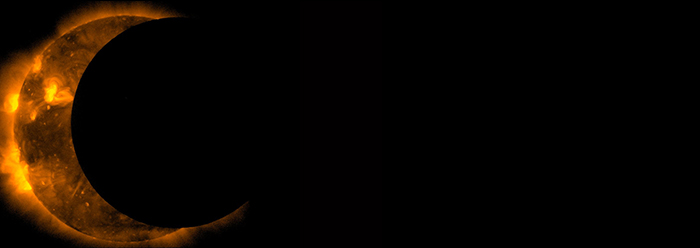A recent study, published in Frontiers in Marine Science, reports on the recurring problem of humpback whales colliding with large estuary-trafficking ships.1
The mouth of the Chesapeake Bay is teeming with fish that humpback whales consume. So it is unsurprising that these huge cetaceans visit the estuary’s entrance during the winter for food.2
Satellite photo-technology was used to monitor specific humpbacks as they visited waters at the eastern edge of the Chesapeake Bay. The researchers confirmed that a high number of humpback whales frequently visit the waters near Chesapeake Bay’s mouth. They also found that roughly 8.5% of the whales had evidence of propeller strikes.1
Some collisions are fatal, with whale bodies washing up on the shore. One example was a young male humpback.
The satellite-facilitated survey included monitoring whale injuries for the past few years, along America’s eastern coastline, where humpback whales hunt for seafood meals—especially menhaden, a small oil-rich fish.1,2
The U.S. Navy-funded journal report concluded that humpback movements in the monitored region come with recurring collision “strike risks” with shipping traffic.
One of the study’s co-authors, marine biologist Joel Bell, noted that “ships and the whales are often trying to share the same narrow sea corridors — with potentially deadly consequences for the large mammals.”2
Whales are social creatures, so they congregate, traveling in pods that vary in size. This behavior complicates traffic jams in shipping lanes.
Also, as social animals, they communicate to each other, even over very long distances.3-5 In short, they sing underwater—projecting their oceanic songs for miles. Whale-song combines a non-random mix of unusual pulsed calls and other noises: whistles, clicks, buzzing, feline-like whining, rasping, belching, high-pitched screeching, groans, moaning, squeak-like yelping, screaming, squawking, thunderous snoring, and more.3,4,6
Meanwhile, sing as they may, the world’s whales were made to move!7
Even so, as migrating pods of these ocean-to-estuary-faring cetaceans serenade each other, they need to keep a safe distance at the mouth of the Chesapeake Bay, because the bay’s busy in-and-out traffic gets pretty risky.3
References
1. Aschettino, J. M., D. T. Engelhaupt, et al. 2020. Satellite Telemetry Reveals Spatial Overlap Between Vessel High-Traffic Areas and Humpback Whales (Megaptera novaeangliae) Near the Mouth of the Chesapeake Bay. Frontiers in Marine Science (Marine Conservation & Sustainability). Posted on Frontiersin.org March 12, 2020, accessed May 7, 2020.
2. Cox, J. 2020. Humpback Whales, Large Ships on Deadly Course at Bay’s Mouth. Chesapeake Bay Journal. 30(3): 4-5.
3. Johnson, J. J. S. 2018. Cetaceans’ Submarine Songfests: Norwegians and Americans Scrutinize Saltwater Serenades by Humpbacks, Bowheads, and Blue Whales. Nordic Legacy Series (Norwegian Society of Texas, Fort Worth, Texas, April 29, 2018), pages 1-14. Christians should be amazed at God’s whales! See Sherwin, F. 2019. Genesis and the Oceans. Acts & Facts. 48(12):15.
4. Roger S. Payne, R. S., and S. McVay. 1971. Songs of Humpback Whales. Science, 173(3997):585-597, published August 13, 1971 (available on CD; when commuting, this author listens to this whale-song CD sometimes). Payne later collaborated with IMAX to produce a unique movie, “Whales: An Unforgettable Journey.” For a short YouTube video on humpback whale songs, check out Whale Songs. Oceania Project. Posted on youtube.com June 8, 2008, accessed May 8, 2020.
5. Payne, K., and R. Payne. 2010. Large Scale Changes over 19 Years in Songs of Humpback Whales in Bermuda. Ethology. 68(2): 89-114.
6. Winn, H. E., and L. K. Winn. 1978. The song of the humpback whale Megaptera novaeangliae in the West Indies. Marine Biology. 47(2): 97-114. The Winns report humpback-whale songs as ranging from “‘moans and cries’; to ‘yups or ups and snores’; to ‘whos or wos and yups’; to ‘ees and oos’; to ‘cries and groans’; and finally to varied ‘snores and cries’. Snores, cries and other sounds can be found in different themes from year to year; yet, invariably one finds a set pattern of changing themes, in a fixed order. Several times humpbacks have breached in the middle of their song and then restarted the song from the beginning or at some different part of the song.”
7. As marine mammals, whales were created on Day 5 of Creation Week. See Genesis 1:20-23, especially 1:21. See also Job 7:12, Ezekiel 32:2, Matthew 12:40, and Lamentations 4:3a.
*Dr. Johnson is Associate Professor of Apologetics and Chief Academic Officer at the Institute for Creation Research.










